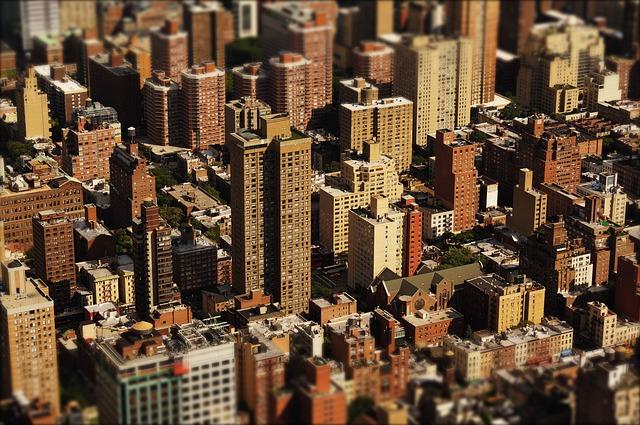In the ever-evolving realm of visual storytelling, the magic behind the scenes is undergoing a revolution. Enter real-time rendering software, a game-changer that is reshaping the landscape of visual effects workflows. This technological marvel is not just a tool but a catalyst, enabling creators to craft breathtaking visuals with unprecedented speed and precision. As directors and artists embrace this innovation, the boundaries between imagination and reality blur, opening up new avenues for creativity and collaboration. In this article, we delve into how real-time rendering is transforming the art and science of visual effects, offering a glimpse into a future where the impossible becomes possible at the click of a button.
Revolutionizing Creativity: The Impact of Real-Time Rendering on VFX Artists
The integration of real-time rendering into the workflows of VFX artists is nothing short of transformative. By allowing artists to see changes instantaneously, these tools have significantly shortened the feedback loop, enabling quicker iterations and more creative freedom. With traditional rendering, artists often had to wait hours or even days to see the results of their work, leading to inefficiencies and creative bottlenecks. Now, real-time rendering software such as Unreal Engine and Unity empower artists to visualize and tweak their creations on the fly, enhancing both productivity and artistic expression.
Key benefits of this technology include:
- Increased Speed: Immediate feedback allows for rapid prototyping and experimentation.
- Enhanced Collaboration: Teams can work together more effectively, making adjustments in real time.
- Cost Efficiency: Reduces the need for expensive rendering farms and long render times.
As the industry continues to evolve, the adoption of real-time rendering is proving to be a game-changer, redefining the boundaries of what is possible in visual storytelling.

Seamless Integration: Enhancing Collaboration in Visual Effects Teams
With the advent of real-time rendering software, collaboration in visual effects teams has reached new heights. Artists, animators, and technical directors can now work in tandem, visualizing changes instantaneously and making adjustments on the fly. This shift not only accelerates the workflow but also fosters a more cohesive creative environment. Teams are no longer siloed, as real-time updates allow for constant communication and feedback, reducing the risk of misalignment and ensuring that everyone is on the same page.
Key benefits include:
- Enhanced Communication: Real-time updates mean that team members can discuss changes as they happen, leading to more dynamic brainstorming sessions.
- Faster Iterations: The ability to see immediate results allows for rapid prototyping and iteration, which can significantly reduce project timelines.
- Improved Accuracy: With everyone working from the latest version, the risk of errors and inconsistencies is minimized.
By integrating real-time rendering into their workflows, visual effects teams are not just improving efficiency—they’re transforming the way they create, collaborate, and innovate.

From Concept to Screen: Accelerating Production Timelines with Real-Time Tools
The integration of real-time rendering software into visual effects workflows is revolutionizing the way studios approach production timelines. By leveraging tools like Unreal Engine and Unity, artists and directors can visualize complex scenes instantly, allowing for immediate feedback and adjustments. This dynamic approach significantly reduces the lag between concept and execution, enabling teams to experiment with creative ideas without the traditional wait times.
- Instant Iteration: Artists can make changes on-the-fly, optimizing creative decision-making.
- Cost Efficiency: Reducing the need for multiple render passes cuts down on production costs.
- Enhanced Collaboration: Real-time previews facilitate better communication among team members, from directors to animators.
With these advancements, the industry is witnessing a shift towards more agile and responsive production environments, where creativity is limited only by imagination, not technology.

Mastering the Tools: Best Practices for Implementing Real-Time Rendering in VFX Workflows
Adopting real-time rendering in VFX workflows requires a strategic approach to fully leverage its potential. By integrating cutting-edge software tools, artists can achieve faster iteration cycles and more dynamic visual storytelling. Here are some best practices to ensure successful implementation:
- Optimize Asset Management: Efficiently manage assets to ensure quick loading and rendering. Use version control systems to track changes and maintain consistency.
- Leverage GPU Acceleration: Utilize the power of modern GPUs to enhance rendering speeds. This not only improves performance but also allows for more complex visual effects in real time.
- Collaborate Seamlessly: Real-time rendering tools should integrate smoothly with existing software, enabling teams to work collaboratively without disrupting established workflows.
- Stay Updated: Keep up with the latest software updates and industry trends to harness new features and improvements that can optimize your rendering processes.
By mastering these tools and techniques, VFX artists can create stunning visuals with unprecedented efficiency, transforming how stories are brought to life on screen.

